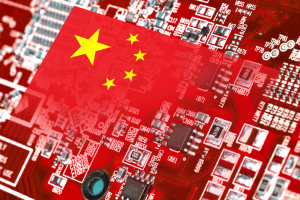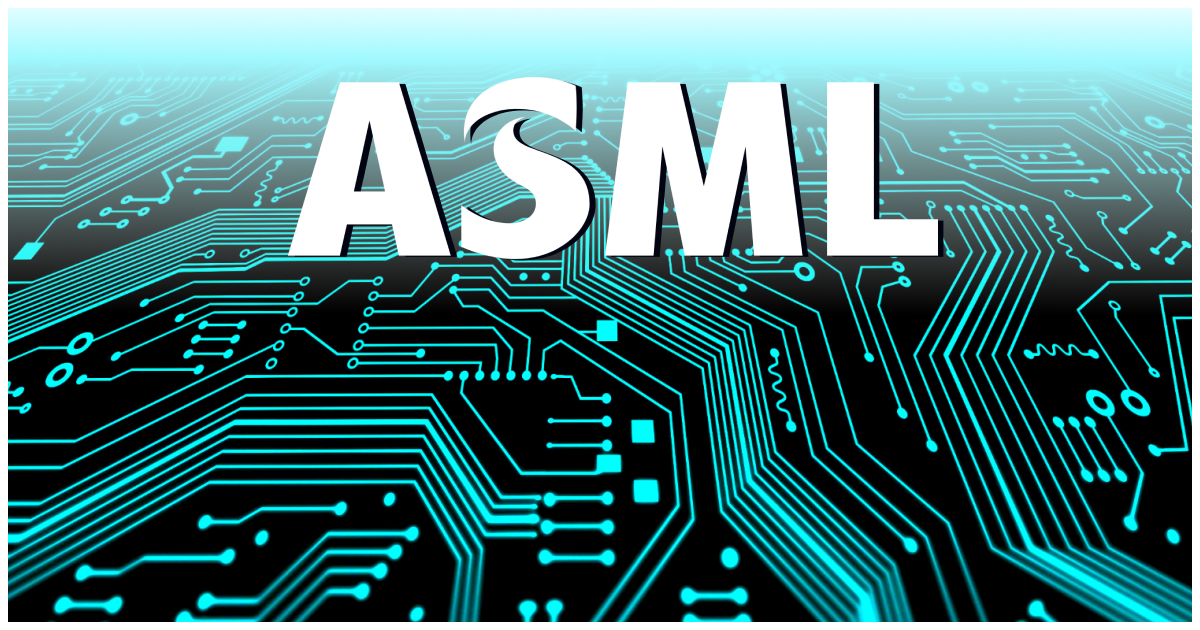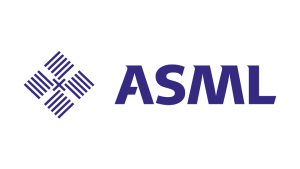How US Pressure on ASML Threatens China’s Tech Ambitions
US-China Tech War: How ASML Became a Key Battleground
ASML, a Dutch company that makes advanced chipmaking machines, is caught in the crossfire of the US-China tech rivalry. How does this affect China’s ambitions to become a global leader in emerging technologies?
Introduction
The author of this article is John, a senior analyst at the Center for Strategic and International Studies (CSIS), where he focuses on technology and innovation policy. He has over 10 years of experience in researching and writing about the global semiconductor industry and its implications for national security and economic competitiveness.
In this article, he will explain why ASML, a Dutch company that produces extreme ultraviolet (EUV) lithography machines, is a critical player in the US-China tech war. He will also analyze how the US pressure on the Netherlands to restrict ASML’s exports to China affects China’s plans to achieve technological self-reliance and leadership in key sectors such as artificial intelligence, 5G, and cloud computing. Finally, he will offer some recommendations for how the US and its allies can balance the need to protect their technological edge with the need to maintain a stable and cooperative relationship with China.
What is ASML and why is it important?
ASML is the world’s leading manufacturer of machines that make semiconductors, the tiny chips that power everything from smartphones to supercomputers. Semiconductors are the building blocks of modern technology and innovation, and they are essential for the development and deployment of emerging technologies that have the potential to transform the world.
ASML’s EUV machines are the most advanced in the world, capable of creating chips with features as small as 5 nanometers, or about 10,000 times thinner than a human hair. These machines use a powerful laser to generate a beam of extreme ultraviolet light, which is then projected onto a silicon wafer through a series of mirrors and lenses. The light etches intricate patterns on the wafer, creating transistors and circuits that form the basis of the chip. The smaller the features, the more transistors can fit on a chip, and the faster, more efficient, and more powerful the chip can be.
EUV machines are essential for producing the next generation of chips that will enable faster, more efficient, and more powerful devices and applications in fields such as artificial intelligence, 5G, cloud computing, and quantum computing. These fields are expected to drive the future of innovation and growth, and to have significant impacts on society, economy, and security.
ASML has a de facto monopoly on EUV machines, as it is the only company in the world that can make them. It sells them to major chipmakers such as TSMC, Samsung, and Intel, who in turn supply chips to global tech giants such as Apple, Huawei, and Google. ASML’s EUV machines are in high demand, as they are the key to unlocking the full potential of the semiconductor industry and the technologies that depend on it.
How does the US pressure the Netherlands to stop ASML from selling to China?
The US views China as a strategic competitor and a potential threat to its technological supremacy and national security. It fears that if China gets access to ASML’s EUV machines, it will be able to produce the most advanced chips in the world and gain an edge in emerging technologies that have military and civilian applications.
The US has imposed export controls and sanctions on Chinese companies and entities that are involved in the development and acquisition of sensitive technologies, such as Huawei, SMIC, and the Chinese Academy of Sciences. It has also lobbied its allies and partners to restrict the flow of technology and information to China, especially in the semiconductor sector.

The US has reportedly been pressuring the Dutch government since 2018 to stop ASML from shipping its EUV machines to China, citing national and international security concerns. The Dutch government has not granted ASML a license to export its EUV machines to China since 2019, effectively blocking the sale of at least one machine that was ordered by SMIC, China’s largest chipmaker.
The US pressure on the Netherlands is part of a broader campaign to isolate China from the global semiconductor supply chain and prevent it from achieving its technological ambitions. The US argues that allowing China to access ASML’s EUV machines would pose a serious risk to the US and its allies, as China could use the advanced chips to enhance its military capabilities, challenge the US leadership in critical technologies, and undermine the global rules and norms that govern technology trade and governance.
How does this affect China’s tech ambitions and what is its response?
China has a long-term vision to become a global leader in science and technology and a self-reliant powerhouse in innovation. It has launched several strategic initiatives and policies to support this goal, such as Made in China 2025, the National Big Data Strategy, and the New Generation Artificial Intelligence Development Plan.
China sees semiconductors as the core and foundation of its technological development and industrial upgrading. It aims to achieve 70% self-sufficiency in core components and basic materials by 2025 and to become the world’s primary artificial intelligence innovation center by 2030.
China’s dependence on foreign suppliers for advanced chips, especially from the US and its allies, is a major vulnerability and challenge for its tech ambitions. The US pressure on ASML and other semiconductor companies has exposed China’s gap in chipmaking technology and equipment, and has disrupted its plans to catch up with the global leaders.
China’s response to the US pressure has been to double down on its efforts to develop its own semiconductor industry and to diversify its sources of supply. It has increased its investment and support for domestic chipmakers, such as SMIC, HSMC, and CXMT, as well as for chip design companies, such as HiSilicon, MediaTek, and Unisoc. It has also sought to cooperate with other countries and regions that have strong semiconductor capabilities, such as Taiwan, South Korea, Japan, and Europe.

China’s efforts have yielded some results, as it has improved its chip production capacity and quality, and has reduced its reliance on foreign imports for some types of chips. However, China still faces significant challenges and bottlenecks in achieving its semiconductor goals, especially in the high-end segment of the market, where ASML’s EUV machines are indispensable. China’s domestic chipmakers are still far behind their global counterparts in terms of technology, scale, and efficiency, and they lack the core competencies and know-how to produce the most advanced chips. China’s chip design companies are also constrained by the limited availability and quality of the chips they can use, and they face fierce competition from the established players in the industry.
China’s cooperation with other countries and regions is also not without obstacles and uncertainties, as they are also subject to the US pressure and influence, and they have their own interests and concerns in dealing with China. For example, Taiwan, which is home to TSMC, the world’s largest and most advanced chipmaker, and a major supplier of chips to China, is also a flashpoint of tension and conflict between the US and China, as the US supports Taiwan’s autonomy and security, while China claims Taiwan as part of its territory and threatens to use force to reunify it. South Korea and Japan, which are also major players in the semiconductor industry and have close ties with the US, are also wary of China’s growing assertiveness and influence in the region, and they have their own disputes and issues with China over trade, security, and history.
What are the implications and recommendations for the US and its allies?
The US pressure on ASML and China’s tech ambitions have created a complex and dynamic situation in the global semiconductor industry and the broader tech landscape. The US and its allies face several challenges and opportunities in dealing with this situation, such as:
- Balancing the need to protect their technological edge and national security interests with the need to maintain a stable and cooperative relationship with China, especially in areas of common concern, such as climate change, public health, and cybersecurity.
- Managing the risks and benefits of engaging with China in the semiconductor sector, such as the potential for technology transfer, market access, and innovation collaboration.
- Strengthening their own semiconductor capabilities and competitiveness, as well as their resilience and diversity in the semiconductor supply chain, in the face of rising costs, complexity, and uncertainty.
- Fostering a rules-based and open global system for technology governance and trade, based on shared values and standards, and addressing the challenges posed by emerging technologies, such as data privacy, security, and ethics.
Some possible recommendations for the US and its allies to address these challenges and opportunities are:
- Implementing the CHIPS for America Act, which provides incentives and funding for semiconductor research, development, and manufacturing in the US, and expanding it to include allies and partners, such as the Netherlands, Taiwan, South Korea, and Japan.
- Establishing a multilateral semiconductor dialogue and cooperation mechanism, involving the US, the EU, Japan, South Korea, Taiwan, and other like-minded countries, to coordinate policies and actions on semiconductor trade, export controls, supply chain security, and innovation.
- Engaging with China in a constructive and pragmatic way on semiconductor issues, based on mutual respect and reciprocity, and exploring areas of potential cooperation, such as standards, best practices, and joint research projects, while also addressing areas of disagreement and concern, such as market access, intellectual property rights, and human rights.
- Supporting the development of a diverse and inclusive global semiconductor ecosystem, that fosters innovation, competition, and collaboration among different actors, such as chipmakers, chip design companies, equipment and material suppliers, and end users, and that promotes the adoption and diffusion of advanced chips and applications in various sectors and regions.
Conclusion
The US-China tech war is a multifaceted and dynamic phenomenon that has profound implications for the global semiconductor industry and the broader tech landscape. ASML, a Dutch company that makes the most advanced chipmaking machines in the world, is a key battleground in this war, as the US tries to prevent China from accessing its EUV machines, while China tries to overcome its dependence on foreign suppliers and achieve its tech ambitions.
The US and its allies face a delicate and difficult task of balancing their technological edge and national security interests with their need to maintain a stable and cooperative relationship with China, especially in areas of common concern. They also need to strengthen their own semiconductor capabilities and competitiveness, as well as their resilience and diversity in the semiconductor supply chain, in the face of rising costs, complexity, and uncertainty. They also need to foster a rules-based and open global system for technology governance and trade, based on shared values and standards, and addressing the challenges posed by emerging technologies.
China, on the other hand, faces a formidable and persistent challenge of developing its own semiconductor industry and achieving its tech goals, especially in the high-end segment of the market, where ASML’s EUV machines are indispensable. China also faces the risk of isolation and backlash from the US and its allies, as well as from other countries and regions that have their own interests and concerns in dealing with China. China also needs to adhere to the global rules and norms that govern technology trade and governance, and to respect the intellectual property rights and human rights of others.
The US-China tech war is not a zero-sum game, nor is it a predetermined outcome. It is a complex and dynamic process that involves multiple actors, factors, and interactions, and that offers both challenges and opportunities for cooperation and innovation. The future of the global semiconductor industry and the broader tech landscape depends on how the US, China, and other countries and regions manage this process and shape its direction.





